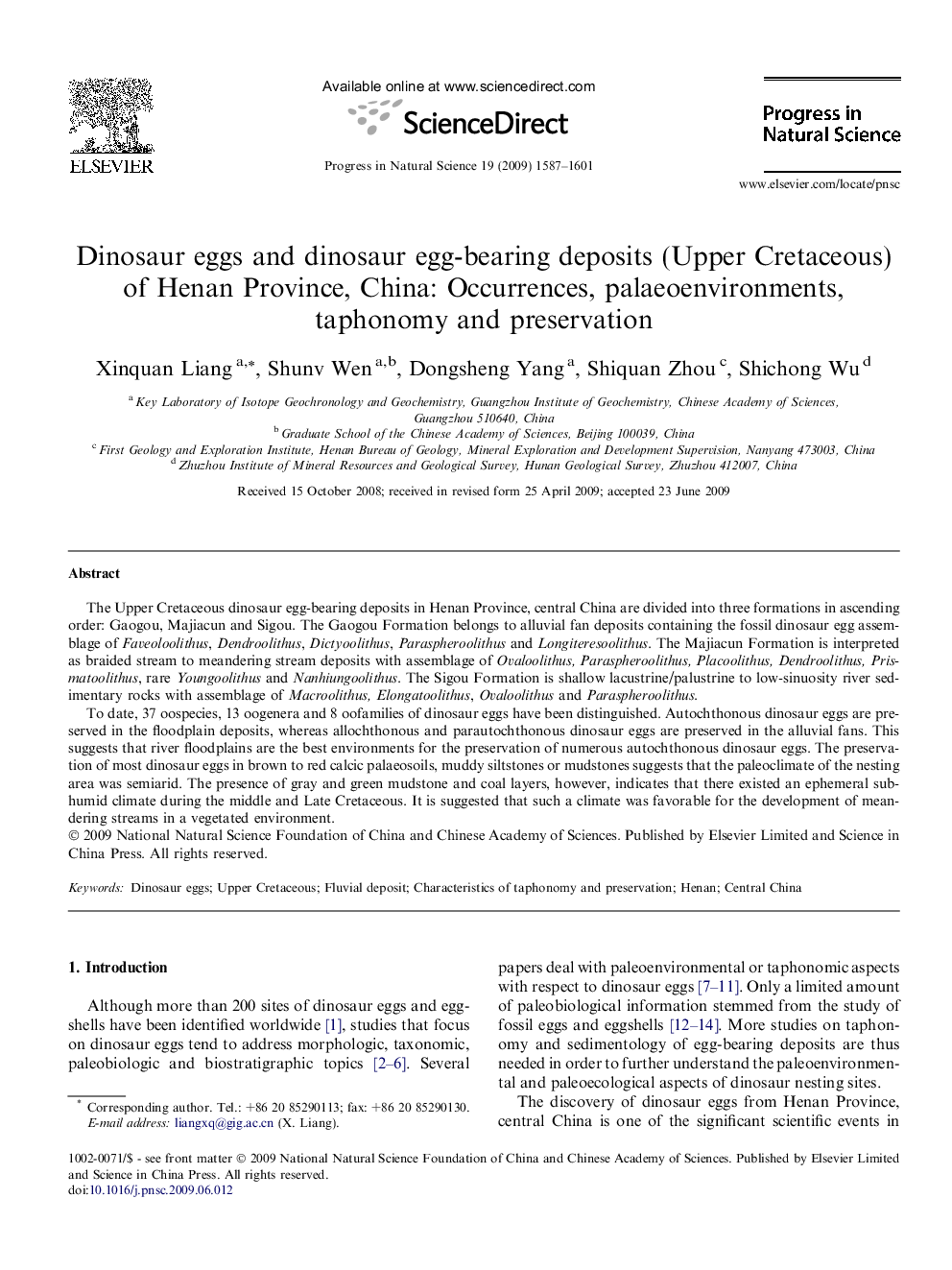| Article ID | Journal | Published Year | Pages | File Type |
|---|---|---|---|---|
| 1548705 | Progress in Natural Science: Materials International | 2009 | 15 Pages |
The Upper Cretaceous dinosaur egg-bearing deposits in Henan Province, central China are divided into three formations in ascending order: Gaogou, Majiacun and Sigou. The Gaogou Formation belongs to alluvial fan deposits containing the fossil dinosaur egg assemblage of Faveoloolithus, Dendroolithus, Dictyoolithus, Paraspheroolithus and Longiteresoolithus. The Majiacun Formation is interpreted as braided stream to meandering stream deposits with assemblage of Ovaloolithus,Paraspheroolithus,Placoolithus,Dendroolithus,Prismatoolithus, rare Youngoolithus and Nanhiungoolithus. The Sigou Formation is shallow lacustrine/palustrine to low-sinuosity river sedimentary rocks with assemblage of Macroolithus,Elongatoolithus, Ovaloolithus and Paraspheroolithus.To date, 37 oospecies, 13 oogenera and 8 oofamilies of dinosaur eggs have been distinguished. Autochthonous dinosaur eggs are preserved in the floodplain deposits, whereas allochthonous and parautochthonous dinosaur eggs are preserved in the alluvial fans. This suggests that river floodplains are the best environments for the preservation of numerous autochthonous dinosaur eggs. The preservation of most dinosaur eggs in brown to red calcic palaeosoils, muddy siltstones or mudstones suggests that the paleoclimate of the nesting area was semiarid. The presence of gray and green mudstone and coal layers, however, indicates that there existed an ephemeral subhumid climate during the middle and Late Cretaceous. It is suggested that such a climate was favorable for the development of meandering streams in a vegetated environment.
